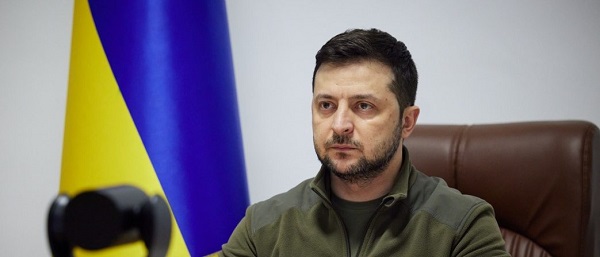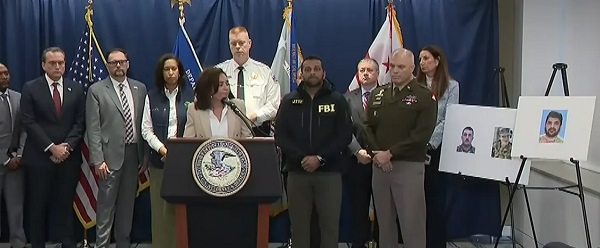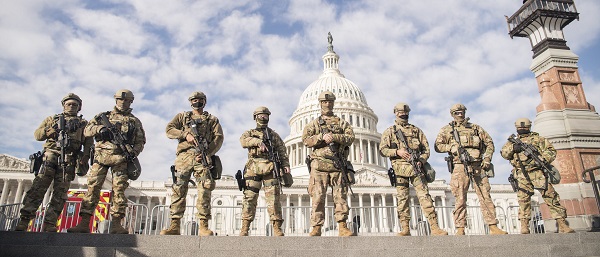International
Rumble CEO slams Google’s suppression of conservative content: ‘Is that not election interference?’

From LifeSiteNews
Rumble CEO Chris Pavlovski cited Google’s suppression of the link to Rumble’s exclusive GOP debate livestream last year as an example of the giant’s ability and willingness to suppress dissent and control what narratives get promoted.
Rumble CEO Chris Pavlovski has reacted to Google suppressing, in Google Search, the link to the Rumble exclusive GOP debate livestream as an example of the giant’s ability and willingness to suppress dissent and control what narratives get promoted.
In conversation with Russell Brand, Pavlovski noted that Google had positioned itself (and gained massive search market share thanks to that) as a service that provides unbiased and relevant results, but that at this point, this is no more than “the bag of goods that they sold us.”
In other words, even if Google started out, and became extraordinarily popular, thanks to organic search – those days are long gone.
Still, seeing products and movies promoted to the top of the page instead of the most relevant to the query result is one thing, but it’s a very different problem when this powerful search engine that the huge majority of users in the Western world regularly turn to, starts “hiding” links to political content.
READ: Biden campaign demands censorship of video showing president wandering off at G7 meeting
Pavlovski mentioned the GOP debate which was exclusively streamed on Rumble, that is, Rumble was the only place to watch it live – and yet, when people searched for this in the hope of seeing the link to the page, it did not come up as the top result.
He said that instead, Google “put” (that is, programmed its algorithms to this end) “some corporate media entity” as the top result, even though it clearly didn’t have the livestream exclusively.
Pavlovski then wondered, “Is that not election interference?”
He went on to explain that this is one way to describe actively suppressing political content from voters and content that concerns one of the two U.S. parties with by far the most clout (and who eventually produce presidents).
Pavlovski also touched on other consequences of the “rigged search” – namely, that it almost to a fault favors Google products (YouTube videos, Google Maps to show locations, etc.) in this way creating “a mouse trap” for its users. And, as critics – Rumble included – keep repeating, seriously undermining competition.
“And that’s one of the reasons why we have a lawsuit against them. It’s very difficult for you to go and search something that’s relevant and find Rumble near the top,” he said.
Brand observed that YouTube (Google) is a powerful entity that has in a sense become a “curator of reality” – “you only see certain stories, you only have access to certain ideas.”
Reprinted with permission from Reclaim The Net.
Daily Caller
Zelenskyy Under Siege As Top Aide Resigns After Home Raided In Major Corruption Scandal


From the Daily Caller News Foundation
Ukrainian President Volodymyr Zelenskyy’s chief of staff, Andriy Yermak, resigned Friday after his home was raided in an ongoing corruption probe that threatens to undermine Zelenskyy’s grip on power during wartime.
Ukrainian authorities on Friday raided the home of Andriy Yermak, Zelenskyy’s chief of staff and right-hand man, as part of a sweeping corruption probe investigating Zelenskyy’s possible involvement in a $100 million scheme to defraud the nation’s atomic energy company. Yermak’s resignation comes at a time when Zelenskyy is under increasing pressure to accept a U.S.-brokered peace deal to end Ukraine’s war with Russia.
The investigation has shaken Ukrainian confidence in Zelenskyy’s administration while Russian strikes continue to rock critical infrastructure. So far, Russia has not commented on the new proposed peace deal.
As a nonprofit, we are dependent on the generosity of our readers.
Please consider making a small donation of any amount here.
Thank you!
Zelenskyy first rose to power on an anti-corruption platform in the 2019 elections, which propelled him into the international spotlight. He has enjoyed a positive global reputation during the three-year war with Russia and has been hailed by numerous Western leaders as a beacon of democracy against autocratic Russia.
Zelenskyy has so far worked with the U.S. on the proposed peace agreement, but has also expressed major reservations about what it will mean for his country. In a public address on November 21, Zelenskyy said the plan puts Ukraine in the position of “either losing its dignity or the risk of losing a key partner.”
Despite the prospect of losing U.S. intelligence sharing and weapons if Ukraine doesn’t accept the deal, Zelenskyy has been shoring up European alliances and international support, most recently signing a deal with France to obtain 100 Rafale jets for its air force. The deal also included anti-air equipment, drones and other munitions.
The Ukrainian Ministry of Foreign Affairs did not immediately respond to the Daily Caller News Foundation’s request for comment.
International
Identities of wounded Guardsmen, each newly sworn in

The two West Virginia National Guard members critically wounded in Wednesday’s ambush near the Farragut West Metro Station have now been identified as Andrew Wolfe and Sarah Beckstrom — young soldiers who had taken their oaths less than a day before gunfire erupted on a downtown Washington sidewalk.
Wolfe, 22, was identified first after Musselman High School in Inwood released a statement confirming the alumnus was one of the soldiers struck. The school said the community was “deeply saddened” and urged residents to pray for him. Wolfe was rushed into surgery and remains in critical condition.
Support poured in across the Eastern Panhandle throughout the day. Friends shared old photos and messages urging him to “keep fighting.” Wolfe, who lives in Martinsburg, is active in the region’s cornhole community, and the Beltway Baggers — organizers of ACL tournaments in Virginia — posted a photo of him flashing a peace sign while asking members to pray for his recovery. “He was shot today while serving our country,” the group wrote.
Federal officials identified the second Guardsman on Thursday as 20-year-old Sarah Beckstrom. U.S. Attorney Jeanine Pirro said Beckstrom had just taken her oath of enlistment and was barely a day into her service when she was gunned down. She underwent emergency surgery and remains in critical condition.
According to investigators, 29-year-old Rahmanullah Lakanwal — an Afghan national admitted to the U.S. following the Kabul evacuation — allegedly stepped from behind a corner and opened fire at close range as the two patrolled under a heightened security directive in the capital. Beckstrom was hit first. Wolfe was shot moments later.
Pirro said both families are at the hospital as doctors fight to keep the soldiers alive. She warned that if either succumbs to their injuries, prosecutors will pursue a first-degree murder charge. “If one of them is to pass — and God forbid that happens — this becomes murder one. That’s it.”
Pirro urged Americans to pray for the wounded Guardsmen. “On a day when families gather together, I ask you to pray for these two young people — that they survive.”
-

 Alberta6 hours ago
Alberta6 hours agoFrom Underdog to Top Broodmare
-

 armed forces2 days ago
armed forces2 days ago2025 Federal Budget: Veterans Are Bleeding for This Budget
-

 Alberta1 day ago
Alberta1 day agoAlberta and Ottawa ink landmark energy agreement
-

 Artificial Intelligence2 days ago
Artificial Intelligence2 days agoTrump’s New AI Focused ‘Manhattan Project’ Adds Pressure To Grid
-

 International1 day ago
International1 day agoAfghan Ex–CIA Partner Accused in D.C. National Guard Ambush
-

 Carbon Tax1 day ago
Carbon Tax1 day agoCanadian energy policies undermine a century of North American integration
-

 International1 day ago
International1 day agoIdentities of wounded Guardsmen, each newly sworn in
-

 International2 days ago
International2 days agoTrump Admin Pulls Plug On Afghan Immigration Following National Guard Shooting





